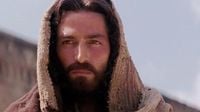As the Easter season approaches, many families are looking for spiritually enriching content to enjoy at home, and one film that consistently rises to the top during this time is La Pasión de Cristo. Directed by Mel Gibson and starring Jim Caviezel, this classic religious film powerfully depicts the final hours of Jesus of Nazareth, making it especially poignant on Good Friday, the day that commemorates his crucifixion.
Originally released in 2004, La Pasión de Cristo has become a staple during Semana Santa, or Holy Week, and is available for streaming on Netflix. The film is rated +16 and can also be found on various open television channels across Latin America during the holy days, particularly on Good Friday, although programming may vary by country.
The official synopsis of the film states: “Condemned to die by crucifixion, Jesus of Nazareth experiences and endures the agony of his last twelve hours.” This gripping portrayal has resonated with audiences around the world, not only for its thematic depth but also for its intense visual storytelling.
Upon its release, La Pasión de Cristo garnered significant attention, not just for its content but also for its striking visual style and emotional weight. The film was nominated for three Academy Awards: Best Makeup, Best Score, and Best Cinematography. It is widely regarded as one of the most impactful films in the religious genre, thanks in part to Gibson's direction and Caviezel's performance as Jesus.
Despite its critical acclaim, the film was not without controversy. Its graphic depiction of violence and suffering sparked debates regarding its portrayal of the crucifixion and the events leading up to it. Gibson's dedication to authenticity is evident in the film's use of Aramaic and Latin, languages that were spoken during the time of Jesus. Initially, Gibson intended for the film to be shown without subtitles, believing that the visual storytelling would convey the narrative effectively. Ultimately, subtitles were added to aid comprehension.
Interestingly, Gibson financed the film himself, investing $30 million after no studios were willing to back the project. The film went on to gross over $612 million worldwide, making it the highest-grossing foreign language or subtitled film in U.S. box office history.
In a recent video released on April 18, Bosco Films and Inspiracine shared twelve intriguing facts about the film, shedding light on its production and the experiences of its cast. For example, Jim Caviezel, who portrayed Jesus, faced extreme physical challenges during filming. He suffered a separated shoulder when the 68-kilo cross fell on him, and he was accidentally whipped twice during the flagellation scenes, resulting in a permanent 35-centimeter scar on his back. Moreover, Caviezel was struck by lightning while filming both the Sermon on the Mount and the crucifixion, experiences that he later described as life-altering.
In a striking revelation made in 2023, Caviezel admitted that he was hospitalized after these incidents and even momentarily "died" during the ordeal, a traumatic experience that deepened his faith. He remarked that it brought him closer to God, emphasizing the profound impact that the film had on him both personally and spiritually.
The filming conditions were also notably harsh. The crucifixion scenes were shot in the Italian winter, with temperatures plummeting below zero (-4°C) and strong winds, which led to Caviezel contracting hypothermia and pneumonia. He even resorted to sleeping in his makeup to save time on the extensive application process required for his character's wounds.
Despite the physical toll it took on him, Caviezel's commitment to the role was unwavering. He believed that the sacrifices made during production added a layer of authenticity to the film that resonated with viewers. Gibson's direction was praised for its fidelity to the biblical narrative, although it drew criticism for its intense violence.
Among the film's many memorable moments is a poignant detail: during the crucifixion scene, it is actually Mel Gibson's hands that are seen nailing Christ to the cross. Gibson has expressed that this was a deeply personal decision, symbolizing his own sins and responsibility for the suffering depicted in the film. He famously stated, "I was the one who put him on the cross. It was my sins that put him there." This personal connection underscores the film's emotional weight and the director's intent to convey a powerful spiritual message.
Additionally, the film features several actors who have their own interesting backstories. Maia Morgenstern, who played Mary, discovered she was pregnant during filming, adding a layer of personal significance to her role. The character of Barrabas, portrayed by Pedro Sarubbi, converted to Christianity during the filming process, illustrating the film's broader themes of redemption and faith.
While La Pasión de Cristo continues to spark conversation and reflection each Easter season, it also serves as a reminder of the enduring impact of cinema on spiritual and cultural narratives. As families gather to watch this film, it provides an opportunity for deeper contemplation on the themes of sacrifice, redemption, and faith.
As it stands, La Pasión de Cristo remains a significant piece of cinematic history, and its recent availability on Netflix has reignited interest in this powerful portrayal of one of the most pivotal moments in religious history. Whether viewed as a work of art, a spiritual journey, or a historical account, the film continues to resonate with audiences around the world.







